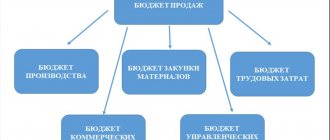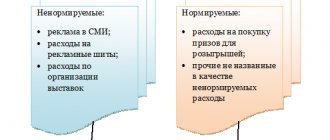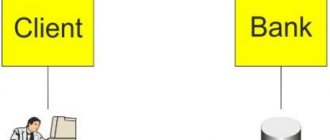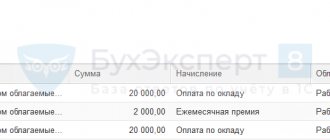How does the object of taxation affect the calculation procedure?
The taxpayer under the simplified tax system is given the right to choose how he will calculate the tax base - based only on income (USN 6%) or by calculating the difference between income and expenses (USN 15%). Reducing the simplified tax system by the amount of insurance premiums for different objects of taxation occurs in different ways:
- with a simplified tax system of 6%, amounts paid in the reporting period are deducted from the tax itself, reducing its amount. At the same time, it is possible to reduce the tax on the amount of contributions transferred for employees only by 50%, and contributions of individual entrepreneurs without employees can be taken into account in full;
- with a simplified tax system of 15%, insurance payments are fully included in expenses, thereby reducing the tax base.
Only the amounts of insurance premiums actually transferred during the reporting period are allowed to be offset. If an overpayment has occurred on contributions, then the tax or tax base under the simplified tax system can be reduced on it only in the period in which the tax authorities decide to offset it (Letters of the Ministry of Finance of the Russian Federation dated 02.20.2015 No. 03-11-11/8413, dated 05.02 .2016 No. 03-11-06/2/5872).
In the declaration under the simplified tax system, paid contributions are reflected in different sections and lines:
- under the simplified tax system “income”, tax-reducing contributions are shown separately for each period in pp. 140-143 of section 2.1.1;
- for the simplified tax system “income minus expenses” there are no separate lines for contributions, because they are included in the expenses reflected in pp. 220-223 of section 2.2.
How to reduce tax on the simplified tax system by 15%
The main principle that helps reduce payments for the simplified tax system by 15% is to timely and correctly record the expense portion.
Account for personal contributions as expenses
Fixed insurance premiums (PFR, FSS, MHIF), which you pay for yourself, can be included in expenses to reduce the tax burden. In some regions, entrepreneurs are refunded the trade tax they paid, so check this option as well.
Pitfalls: Fixed and additional fees can be paid annually or quarterly. It is possible to make additional payments before July 1 of the year following the reporting year, then they are transferred to the expense item for the next year. It is important not to get confused about billing periods.
Is it difficult to understand the nuances? We will take care of accounting and personnel records and offer legal ways to reduce taxes!
Calculate the cost of service in Finguru
Account for employee contributions as expenses
If you are an employer, you have the right to deduct:
- 50% of insurance premiums paid to the Pension Fund and Social Insurance Fund;
- sick leave paid at your expense (3 days);
- contributions for voluntary insurance of employees.
In this case, it does not matter how your employees are registered: under an employment contract or a GPC agreement.
Pitfalls: if additional contributions for yourself can be transferred to the next year, then contributions for employees must be transferred regularly. And then deduct these expenses from your next tax payments.
Correct recording of other costs
It happens that an entrepreneur forgets to take into account all expenses, or does not know that certain expenses can be written off as expenses. For example: here are the expenses that reduce the amount of tax on the simplified tax system by 15%:
- rent for premises;
- travel allowances;
- repair costs and intangible assets;
- purchase of know-how;
- payments to the insurance company;
- payment for the services of an accountant, HR officer, and outsourced lawyer.
All these expenses must be documented (acts of service provision, lease agreement, etc.).
Not all entrepreneurs know that losses for previous years can be reflected in the declaration (documented as expenses).
Pitfalls: it is important that all these expenses are recorded in the exact tax period for which you will be reporting. Have time to complete all the missing expenses on time, reducing the amount of tax on the simplified tax system by 15%.
We accept individual entrepreneurs and LLCs for accounting services. We will help you put things in order in your reports, take care of communication with regulatory authorities, optimize taxes and insure against mistakes worth a million rubles!
Order a free consultation
Do fixed insurance premiums reduce the simplified tax system?
When calculating tax, individual entrepreneurs take into account contributions both for employees and for themselves, including 1% of “pension” contributions from the amount of excess income of 300,000 rubles.
Under the simplified tax system “income”, the individual entrepreneur has the right to reduce the tax by the amount of insurance premiums paid in the reporting period for employees and by fixed contributions paid “for himself”, but not more than 50%. If the entrepreneur does not have employees, fixed contributions transferred in the reporting period reduce the tax of this period without restrictions, i.e. you can offset their entire amount (clause 3.1 of Article 346.21 of the Tax Code of the Russian Federation).
Under the simplified tax system “income minus expenses” paragraphs. 7 clause 1 art. 346.16 of the Tax Code of the Russian Federation allows insurance premiums paid for employees to be taken into account in expenses, so many individual entrepreneurs have doubts whether fixed payments paid can be included in expenses. The ambiguities were eliminated by the clarification letter of the Ministry of Finance dated January 28, 2015 No. 03-11-11/2894 - it directly states that fixed contributions of individual entrepreneurs “for themselves” (including 1% of Pension Fund contributions) can be fully included in the tax base .
Additional fees
The obligation to pay additional contributions to compulsory pension insurance arises for an entrepreneur if his income exceeds 300,000 rubles. In this case, he must pay 1% to the insurance fund on income that exceeded this amount, says clause 9 of Art. 430 Tax Code of the Russian Federation.
Let's give an example. If the annual income is more than 300,000 rubles, then the individual entrepreneur will have to pay a fixed amount of pension contributions, which this year is 32,448 rubles, plus 1% of the amount of income that exceeds the established limit. The Federal Tax Service expresses this position in letter dated 09/01/2020 No. BS-4-11/14090.
Document
How are individual entrepreneurs’ expenses on the simplified tax system taken into account when paying insurance premiums “for themselves”?
How to reduce the simplified tax system for insurance premiums for the object “income”
The single tax under the simplified tax system is calculated on an accrual basis from the beginning of the year. The taxpayer, calculating the amount of tax payable:
- First, he summarizes his income from the beginning of the year.
- Calculates the tax by multiplying income by the regional rate (in general, 6%, but the authorities of a constituent entity of the Russian Federation have the right to reduce it).
- If the payer is an employer, he checks how much the tax can be reduced due to insurance contributions - the law does not allow it to be reduced by more than 50%.
- Adds up the amounts of insurance premiums paid since the beginning of the year (it is the paid premiums that are accepted, regardless of the period for which they were accrued, excluding overpayments that were not accepted for offset).
- Determines the final amount of payment under the simplified tax system by subtracting the paid contributions from the amount of accrued tax (for employers - within the 50% limit).
This procedure applies both when calculating advances for each period and when calculating the annual tax under the simplified tax system.
Example
Meridian LLC applies the simplified tax system of 6%. During the 1st half of 2021, the company received income:
- for the 1st quarter of 2021 - RUB 10,500,000.
- for 6 months of 2021 - RUB 15,800,000.
The Company accrued and paid insurance premiums for the following employees:
- in the 1st quarter the amounts for December 2021 and January 2020 were listed in the amount of 290,000 rubles; the company is in arrears regarding contributions for February;
- During the six months, Meridian made contributions to the budget for December 2019 – April 2021 and partially for May 2021 in a total amount of 640,000 rubles. When calculating tax, the company will be able to take into account the remaining unpaid portion of contributions for May in the period when it actually transfers the debt.
How a company accountant will calculate advance payments for the 1st quarter and half of the year:
Income for the period x STS rate – Contributions paid within the 50% limit.
Let's give the order of calculation:
- for 1st quarter (all calculations in rubles):
10,500,000 x 6% = 630,000 – simplified tax system on income received;
630,000 x 50% = 315,000 - the maximum tax can be reduced by this amount;
315000>290000 – compares the limit and the actual amount of contributions paid in the 1st quarter; since the amount of contributions is less, they can be taken into account in full;
630,000 – 290,000 = 340,000 – the amount of the advance payment under the simplified tax system for payment for the 1st quarter is determined.
- in 6 months:
15,800,000 x 6% = 948,000 - tax according to the simplified tax system;
948,000 x 50% = 474,000 – the tax reduction limit is calculated;
474,000 <640,000 – upon comparison, it turned out that the amount of contributions paid for the half-year is greater than the limit, so the tax is reduced only within the limit, i.e. by 474,000 rubles;
948,000 – 474,000 = 474,000 – calculated the amount of the advance for the six months;
474,000 – 340,000 = 134,000 – advance payment to Meridian LLC for the first half of the year payable (the advance paid for the 1st quarter is offset).
Ways to reduce the single tax payable under the simplified tax system
Organizations using the simplified tax system, however, like other taxpayers, are interested in saving their money, including by reducing taxes payable. In order to reduce the single tax under the simplified tax system, it is necessary either to reduce income or to increase the expenses accepted for accounting. This applies to organizations using the simplified tax system that calculate the amount of tax based on the difference between income and expenses.
But companies paying a single tax on income will be able to save only by reducing their amount.
In addition to simple savings, simplified organizations have another significant reason to monitor the level of revenue received. The fact is that if an organization’s income exceeds the limit allowed for a “simplified” person (RUB 68,820,000 in 2015), it will have to switch to OSNO and pay all relevant taxes from the moment the excess occurred. (clause 4.1 of article 346.13 of the Tax Code of the Russian Federation)
To prevent this, organizations using the simplified tax system can use one of the existing methods of legally understating the amount of income for tax accounting purposes.
How to reduce income by acting as an intermediary
This scheme will be convenient for companies engaged in the resale of large quantities of goods. In order to implement it, you need to conclude a commission agreement with your buyer, instead of the usual purchase and sale agreement. Under this agreement, the organization on the simplified tax system will act as an intermediary, and the buyer will act as the customer.
The customer transfers money to the intermediary for the goods he needs. And the intermediary, in turn, transfers money to the supplier, subtracting from it the amount of his commission (which, according to preliminary calculations, should be equal to the expected profit from the transaction).
Now the supplier transfers the goods to the intermediary, who, in turn, transfers it to the customer. With this scheme of work, the organization on the simplified tax system, acting as an intermediary, is obliged to take into account as income only the amount of the commission received. (Clause 9, Clause 1, Article 251 of the Tax Code of the Russian Federation).
Working according to this scheme will also be convenient for organizations using the simplified tax system engaged in the tourism business. Since the tour operator is directly involved in the formation of the tour, and the travel agency is responsible for its implementation, the latter has to buy the goods in the form of tourist vouchers from the operator, working with him under a sales contract.
Next, the agency sells tours to its clients, thus generating its own, often quite considerable, income. But with expenses, the situation is not so simple: in accordance with the letter of the Ministry of Finance of the Russian Federation dated July 20, 2005 No. 03-11-04/2/28 and the letter of the Federal Tax Service for the Moscow Region dated April 8, 2005 No. 22-19/4554 , tourist vouchers are not goods, therefore, the travel agency does not have the right to take into account the funds spent on their purchase as expenses when calculating the single tax according to the simplified tax system.
By working with tour operators under a commission agreement, and calculating the tax on the amount of commission received, the travel agency will be able to significantly reduce the amount of single tax payable. In addition, taking into account only the amount of commission fees as part of income, a travel agency can easily invest within the established limit on revenue and reserve the right to apply the simplified tax system next year.
Scheme of the organization’s work on the simplified tax system as an intermediary
- A commission agreement is concluded for the purchase of goods.
- The buyer transfers money to the intermediary for the goods
- The intermediary pays the goods to the supplier minus a commission for his services.
- The supplier ships the goods to the intermediary.
- The goods are transferred to the buyer.
Example:
Aktiv LLC carries out wholesale trade and plans to switch to the simplified tax system starting next 2016. In the first half of 2015, the company's total income reached 44 million. rub. In the third quarter, it is planned to sell 10 sets of furniture at a price of 800 thousand rubles. every. U buys it at a price of 500 thousand rubles. for 1 set. The company expects to receive a profit of 3 million rubles from the future transaction. ((800 thousand rubles – 500 thousand rubles) x 10 sets).
Thus, for 9 months the planned amount of income should be 52 million rubles. (44 million rubles + 800 thousand rubles x 10 sets), which exceeds the revenue limit required for applying the simplified tax system in 2021. (RUB 51,615,000).
To avoid this, Aktiv decided to enter into a commission agreement with the buyer, under the terms of which he himself is an intermediary. According to the agreement, “Aktiv” must, on its own behalf, but at the expense of the customer (buyer), purchase 10 sets. furniture at a price of 500 thousand rubles. each, in order to subsequently transfer them to the customer. At the same time, the remuneration for services will be 3 million rubles. (300 thousand rubles x 10 sets).
It turns out that by concluding a commission agreement, Passive reduced the amount of revenue for the third quarter (from 52 million rubles to 47 million rubles). Accordingly, his total income for 9 months of 2015 amounted to 47 million rubles. (44 million rubles + 3 million rubles), thereby gaining the right to switch to the simplified tax system from 2021.
How to reduce income by receiving a loan instead of income
This scheme is ideal for the case when the calendar year is coming to an end, a major deal is on the horizon, and your “simplistic” company is just fitting into the established revenue limit.
In order to remain on the simplified tax system in this situation, make a profitable deal and receive payment from the buyer on time, you can do the following.
You need to conclude 2 agreements with the buyer: purchase and sale and loan. Under the first contract, your company will supply goods to the buyer using the simplified tax system. Thus, the buyer will have an obligation to pay for the goods delivered, but he should not rush to pay it off.
Instead, he needs to transfer the same amount to you, while indicating in the payment order that the funds are transferred as a loan, which, accordingly. according to Article 251 of the Tax Code of the Russian Federation it is not income.
Thus, at the end of the year, reciprocal obligations will arise to both partners. With the onset of the new year, the income limit will begin to be calculated again and now firms can offset mutual obligations.
In order to convince the tax authorities of the reality of the loan in the event of an audit, it is necessary to date it during registration to an earlier date than the concluded purchase and sale agreement. In addition, it makes sense to take out a loan not for free, but at a symbolic interest. This fact will once again convince the tax authorities of the legality of your actions and will enable the buyer to feel your gratitude in the form of interest received on the loan.
Scheme for the buyer to provide a loan as payment for the delivered goods
- The supplier ships the goods
- The buyer provides a loan to your company - the supplier of the goods.
- After the required time, the companies offset mutual obligations.
Example:
The organization Passive LLC is on the simplified tax system. In 2015, for 11 months of work, its income amounted to 62 million rubles.
In December, Passive must ship goods worth 8 million rubles to the buyer. But if this amount is received this year, the revenue will be equal to 70 million rubles, thereby exceeding the permissible limit (68,820,000 rubles).
In order not to leave the “simplified” system and not to postpone payment for the delivered goods until next year, “Passive” signed an interest-free loan agreement with the buyer in the amount of 8 million rubles, within the framework of which the buyer provided a loan to the organization. "Passive" shipped the goods to the buyer, and counter debt arose between the companies.
Now, having waited until next year, the partners need to offset their mutual obligations. Thus, “Passive” transferred the receipt of income in the amount of 8 million rubles. for the new year, thereby securing the right to apply the simplified tax system.
“Partnership scheme” for reducing income
In accordance with paragraph 3 of Art. 346.14 of the Tax Code of the Russian Federation, only organizations using the simplified tax system with the object of taxation “income-expenses” can use this method.
This method requires the presence of two firms on the simplified tax system, which must enter into a joint activity agreement between themselves, thereby organizing a simple partnership and initiating common work within the framework of the agreement.
In such a situation, partner firms can include in income for the purposes of calculating the single tax not the entire volume of revenue received, but only the amount of profit received from joint activities. (Article 1048 of the Civil Code of the Russian Federation). It is divided among all participants of the partnership, in proportion to the contribution of each of them, and in any case will be less than the proceeds from the sale, since it already represents the difference between the income and expenses of the partnership.
Accounting for transactions carried out by a simple partnership must be carried out separately from accounting for the transactions of each of the firms in accordance with PBU 20/03 (approved by order of the Ministry of Finance of Russia dated November 24, 2003 No. 105n).
The legality of accepting as income only the amount of profit received from joint activities is confirmed by decisions of the Federal Arbitration Court of the Ural District dated September 8, 2003 No. F09-2851/03-AK and the North-Western District dated May 12, 2004 in case No. A21 -11188/03-С1.
Therefore, if the tax inspector disagrees with this method of accounting for income under the simplified tax system, you can point out to him that he was wrong, referring to the above court decisions.
Scheme of work under a partnership agreement
- Firms using the simplified tax system enter into a joint partnership agreement.
- Firms using the simplified tax system finance the work of the partnership.
- The partnership pays the supplier for the goods.
- The supplier ships goods to the partnership.
- The buyer pays the partnership for the goods.
- The partnership ships the goods to the buyer.
- Firms using the simplified tax system receive profit from the work of the partnership.
Author of the article: Burenin Viktor
Author of a series of articles devoted to optimization of taxation and submission of tax reports under the simplified tax system, administrator and consultant of the website usn-rf.ru on these issues.
Developer of an online service for automatic generation of tax returns under the simplified tax system. Read more…
Reducing the simplified tax system for insurance premiums of individual entrepreneurs who are not an employer
Under the simplified tax system “income”, a special procedure for calculating tax is provided for individual entrepreneurs without employees. Individual entrepreneurs' insurance premiums reduce the simplified tax system by the entire amount contributed to the budget, without taking into account the 50% limitation (clause 3.1 of article 346.21 of the Tax Code of the Russian Federation). In fact, the tax can be reduced to 0.
Example
IP Petrov works alone on the simplified tax system “income”. In January 2021, he paid part of the fixed contributions for himself in the amount of 10,000 rubles. Income of individual entrepreneurs in the 1st quarter amounted to 215,000 rubles.
- Tax amount for 1st quarter:
215000 x 6% = 12900 rub.
- Because Petrov does not have employees, he can count the entire amount of insurance premiums paid in the 1st quarter towards a tax reduction:
12900 – 10000 = 2900 rub. - tax payable.
Individual entrepreneur – payer of insurance premiums
Individual entrepreneurs have a dual status. At the same time he speaks:
- an individual;
- subject of business activity.
The individual entrepreneur is his own employer. Therefore, all responsibility regarding ensuring a future pension and medical insurance lies solely with him.
The tax burden of individual entrepreneurs includes not only taxes, but also insurance premiums, which must be paid. An individual entrepreneur can influence the amount of taxes if he treats his income and expense items wisely. As for STV, their amount is fixed for individual entrepreneurs.
Questions related to the procedure for calculating STV and their payment are constantly heard. Individual entrepreneurs who suspend their activities for some time or work at a loss insist that payment of contributions for this period should not be mandatory.
Government agencies have the opposite opinion. It is based on the fact that if an individual entrepreneur is listed in the register, but does not carry out activities, it means that he has good (for him) reasons. In order not to pay fees during downtime, you need to deregister.
Important! The obligation to pay STV for an individual entrepreneur appears simultaneously with the status of an entrepreneur. It has nothing to do with whether the activity is actually carried out or whether the individual entrepreneur receives income (








